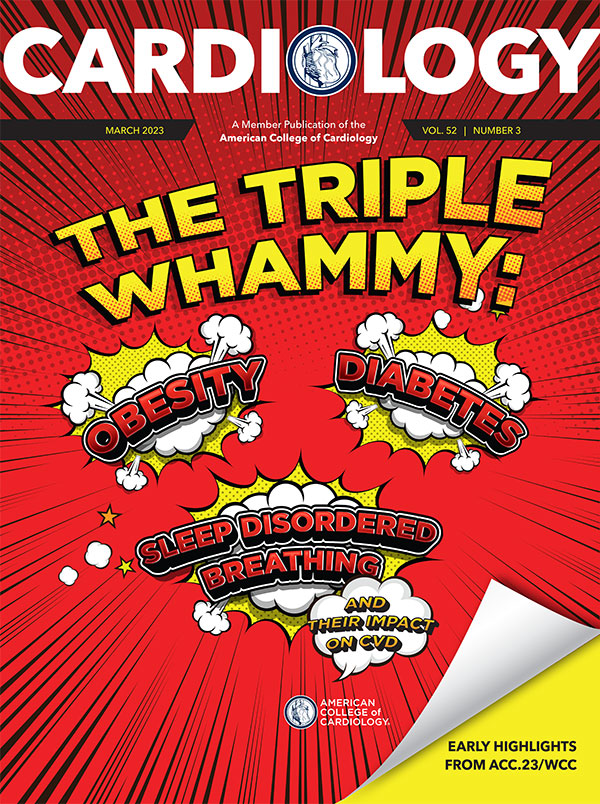Innovating Health Care | CES 2023: Forces Influencing the Digital Transformation of Health Care

The Consumer Electronics Show (CES) this year boasted more than 122,000 participants and a robust digital health presence. With sessions ranging from Data in the Age of Public Health Emergencies and Cyber and Other Threats to Smart Cities, Personalized Medicine, Women's Health Tech and Digital Twins, CES left no digital transformation stone left unturned.
These panels were replete with individuals enacting change in health care delivery rather than espousing its potential benefits. To any who attended CES this year, it was clear that the digital transformation of health care is happening as we speak and practice. ACC's Chief Innovation Officer Ami B. Bhatt, MD, FACC, and ACC's Executive Director of Global Innovation and New Product Development Jen Bae, share their key takaways from the meeting with Cardiology.
Vision of a Hybrid Future
The future includes a migration to hybrid care delivery, according to many speakers who highlighted the patient centricity of these models and emphasized the role of continuous care over episodic care. They touted virtual and in-person blended care as the care delivery mechanism the patient community wants for their health care, and noted that care models that embrace value-based care will play an essential role in establishing and growing a hybrid infrastructure.
A one-to-one replacement of in-person with virtual care is not the right transition, according to most speakers. Rather, the current approach to hybrid care is redesign: determining the most appropriate clinical team, location and delivery mechanism, customized to the patient's needs. Iterating on and personalizing continuous care is the next frontier.
Digital Health Extends Reach of Shrinking Clinician Workforce
The current workforce shortage across multiple disciplines will drive digital transformation, and will rely on artificial intelligence (AI) and computing power to extend the clinician's reach, according to NASDAQ president and CEO Adena Friedman.
Building an ecosystem to correlate and manage multiple devices, including medical grade wearables, rose repeatedly as a key need. All stakeholders, from small tech companies to large investment firms, recognized that for clinician adoption to occur, there need to be coherent, comprehensive platforms that aggregate remote data.
Supporting Better Outcomes at Patient, Population Levels
Virtual and augmented reality as well as data analytics and AI were pervasive across disciplines throughout CES. In the cardiovascular field, the solutions were oriented towards increasing clinician efficiency. These advances ranged from offering personalized guidance to increased efficacy in population health management. Notably, Abbott received an innovation award for the Aviara VR, a leadless pacemaker with unique mapping capability to assess correct positioning prior to placement that is also completely retrievable.
Meanwhile, colleagues at Microsoft emphasized taking unstructured data and utilizing AI to ensure subpopulations with unique risk factors were accurately assessed, allowing for more nuanced intervention. The need for clinician input and oversight was recognized by all stakeholders in these conversations.
Challenging Assumptions About Health, Tech Literacy
Is the population's ability to engage in technologically advanced health care underestimated? Representatives from Google wagered that the average patient frequently engages digitally in many non-health care arenas, which increases their digital literacy in the health care arena. Several sessions addressed health equity and surfaced the concept that we might assume in error that certain populations have lower tech literacy. Speakers advocated for measuring literacy directly to best assess the right mechanism of health care delivery for an individual or community.
Solving the Last Mile Problem
ACC Innovation Resources
Learn about best practices for consumer cardiovascular technology solutions in a report led by the ACC and the CTA. Click here to access the report.
Click here to learn more about the ACC Innovation Program.
Interested in innovation? Click here to join the ACC Health Care Innovation Member Section.
Participants also debated whether the difficulty of the "last mile" for health care delivery is underestimated. Most other industries have figured out, even mastered, the last mile. While all efforts and money now should be focused on solving this issue, many questions remain. Is the last mile harder in health care because the buyer (systems and practices) and user (clinicians and patients) are two different entities and each may have different priorities?
Homeward Health is one example of moving health care upstream and representatives discussed the mechanisms to seamlessly deliver high-quality care in the communities where people live. This aligns with ACC's focus on community-based partnerships to successfully implement new innovations and increase adoption of guideline-directed medical therapy.
The architecture for solving for the last mile of care may be to build on the primary care delivery infrastructure to engage in preventive cardiovascular care and chronic cardiovascular disease management. The initial forays into this care delivery innovation will occur in value-based or large self-insured markets where the payer/provider priorities align with those responsible for the last mile of care delivery.
Importance of Collaboration
Cross-industry collaboration ranging from setting consumer standards, bringing together key stakeholders and providing a clinician viewpoint at CES to an overwhelmingly tech audience has grown immensely since the inception of the collaboration between ACC and the Consumer Technology Association (CTA), the owner and producer of the annual CES, several years ago.
While CES represents technology companies, the ACC represents clinicians, administrators and patients. This collaborative relationship is essential to move the dial on clinician well-being and patient care. The movement to hybrid care to improve access, along with the role of digital health in extending the reach of the clinician, the use of data analytics to support more equitable outcomes and the attention to achieving the last mile of care delivery are each essential aspects of the successful digital transformation of health care.
Clinical Topics: Cardiovascular Care Team
Keywords: ACC Publications, Cardiology Magazine, Innovation, Artificial Intelligence, Augmented Reality, Consensus, Ecosystem, Ecosystem, Emergencies, Electronics, Workforce, Pacemaker, Artificial, Wearable Electronic Devices, Virtual Reality, Cardiovascular Diseases, Patient Care, Delivery of Health Care, Search Engine
< Back to Listings

